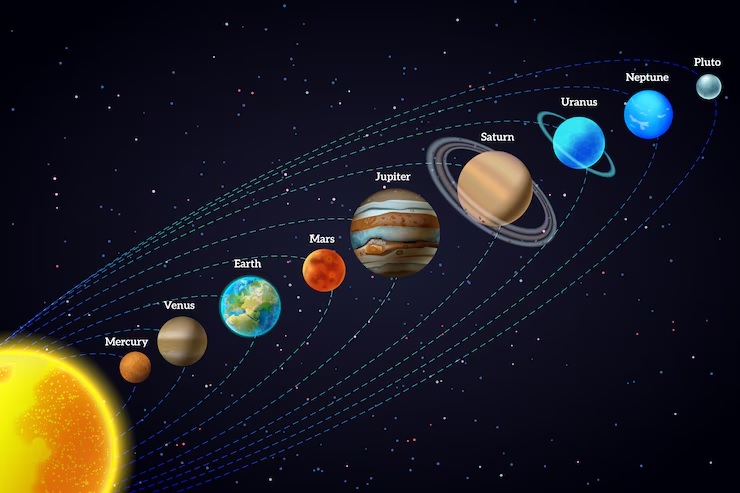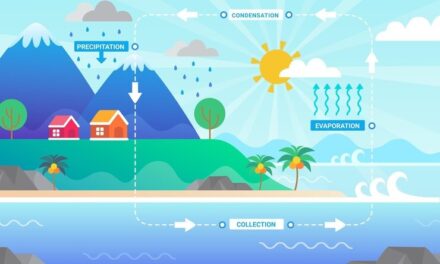The Sky
When we look up at the sky, we see a vast space filled with twinkling stars, a bright sun, and sometimes the moon. The sky appears blue during the day due to the way sunlight interacts with the Earth’s atmosphere. At night, the sky turns dark, and we can see countless stars, planets, and sometimes even satellites moving across the sky. The sky is a window into the universe, which contains everything from tiny meteors to enormous galaxies.
The Planets
Planets are large celestial bodies that revolve around the Sun in fixed paths called orbits. There are eight planets in our Solar System: Mercury, Venus, Earth, Mars, Jupiter, Saturn, Uranus, and Neptune. Each planet is unique in size, composition, and atmosphere. Mercury is the smallest and closest to the Sun, while Neptune is the farthest and coldest. Earth is the only planet known to support life, thanks to its water, air, and suitable climate.
The Stars
Stars are giant balls of burning gases, mainly hydrogen and helium. They produce light and heat through nuclear reactions. The Sun is the closest star to Earth and the center of our Solar System. It provides us with warmth and energy. Stars come in different sizes and colors, from small red dwarfs to enormous blue giants. At night, they appear as tiny specks of light because they are very far away from us. Some stars form patterns in the sky called constellations, like Orion and Ursa Major.
The Satellites
A satellite is an object that orbits around a planet. There are two types of satellites: natural and artificial. The Moon is Earth’s only natural satellite. It moves around our planet and appears in different shapes at different times, known as phases of the moon. Artificial satellites, like weather and communication satellites, are man-made objects launched into space to help in various fields, including broadcasting, navigation, and weather forecasting.
The Solar System
The Solar System consists of the Sun, eight planets, their moons, asteroids, and comets. The Sun’s gravity holds the entire Solar System together. Planets revolve around the Sun at different speeds. The four inner planets—Mercury, Venus, Earth, and Mars—are rocky, while the four outer planets—Jupiter, Saturn, Uranus, and Neptune—are made mostly of gas. Between Mars and Jupiter lies the asteroid belt, a region filled with rocky bodies. Comets, made of ice and dust, travel in long orbits around the Sun, sometimes creating bright tails when they come close to it.
Our Planet Earth
Earth is the third planet from the Sun and the only one known to support life. It has three main layers: the core, the mantle, and the crust.
The core is the innermost part of the Earth, made mostly of iron and nickel. It is extremely hot and is divided into an inner and outer core.
The mantle lies above the core and is made of semi-solid rock. The movement of molten rock in the mantle causes changes on Earth’s surface, such as earthquakes and volcanic eruptions.
The crust is the outermost layer of Earth, where we live. It is made up of land and ocean floors. The crust is broken into pieces called tectonic plates that move slowly, causing the formation of mountains and valleys.
Volcanoes
Volcanoes are openings in Earth’s crust where molten rock, gases, and ash escape from deep inside the planet. When a volcano erupts, lava flows out and cools, forming new land. Some volcanoes are active and erupt frequently, while others remain dormant for years. Volcanic eruptions can change landscapes and even affect the climate.
Movements of the Earth
Earth moves in two main ways: rotation and revolution.
Rotation is the spinning of Earth on its axis. It takes about 24 hours to complete one rotation, causing day and night. When a part of Earth faces the Sun, it experiences daytime, while the opposite side has night.
Revolution is the movement of Earth around the Sun in an elliptical orbit. It takes approximately 365 days (one year) to complete one revolution. This movement is responsible for the changing seasons on Earth.
Northern Hemisphere and Southern Hemisphere
Earth is divided into two halves by an imaginary line called the Equator. The part above the Equator is the Northern Hemisphere, while the part below is the Southern Hemisphere. These hemispheres experience opposite seasons at the same time. For example, when it is summer in the Northern Hemisphere, it is winter in the Southern Hemisphere.
Seasons of the Earth
Earth experiences four main seasons: spring, summer, autumn, and winter. These seasons are caused by Earth’s revolution around the Sun and the tilt of its axis. The tilt means that different parts of Earth receive varying amounts of sunlight throughout the year.
In spring, the weather becomes warmer, plants grow, and flowers bloom. In summer, days are longer, and temperatures are higher. In autumn, leaves change color and fall from trees, and the air becomes cooler. In winter, temperatures drop, and some regions experience snowfall.
How Are Seasons Formed?
Seasons occur because Earth’s axis is tilted at an angle of about 23.5 degrees. As Earth revolves around the Sun, different parts of the planet receive more or less sunlight at different times of the year.
When the Northern Hemisphere tilts toward the Sun, it experiences summer, while the Southern Hemisphere experiences winter. Six months later, the Southern Hemisphere tilts toward the Sun, bringing summer to that side and winter to the Northern Hemisphere. This cycle repeats every year, giving us the beautiful changes in weather and environment that we call seasons.
The universe is vast, and our Earth is just a tiny part of it. The sky, planets, stars, satellites, and the entire Solar System work in harmony, following natural laws of motion. Earth’s internal structure, its movements, and its relationship with the Sun shape our daily lives and the changing seasons. By understanding our planet and its neighbors, we gain a greater appreciation for the wonders of the cosmos and the delicate balance that makes life possible on Earth.
The worksheet covers the following topics-
The sky
The stars
the planets
Satellites
Solar System
Our planet Earth
Movements of the Earth
How are seasons formed
Festivals and the heavenly bodies
These questions aim to challenge students to think deeply about the concepts of rotation and revolution, applying their knowledge to different scenarios and considering the implications of these motions on planetary characteristics and phenomena.

















